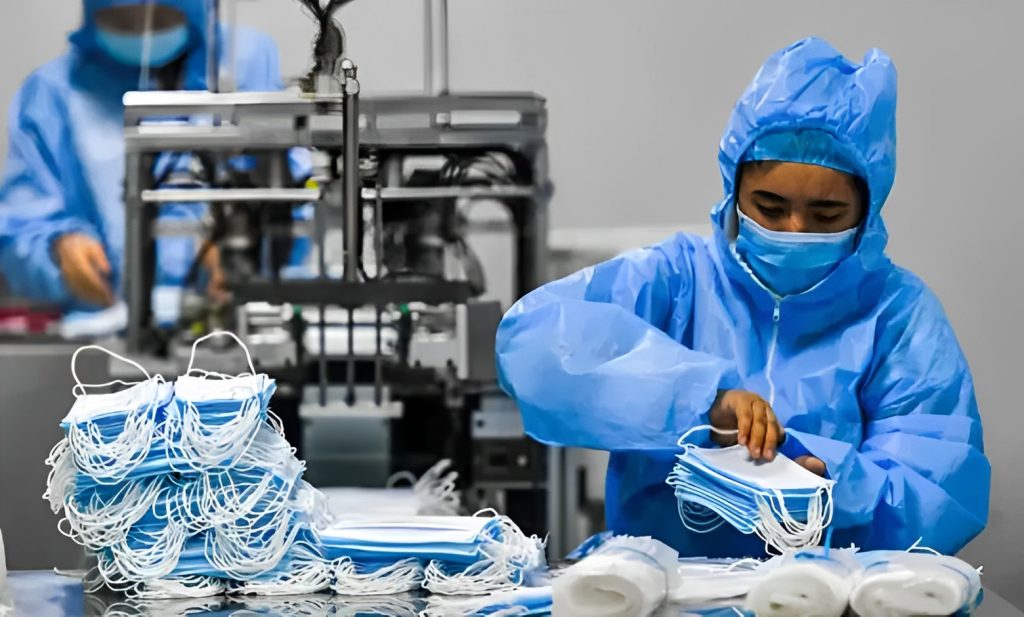
In the bustling realm of medical supplies, few articles are as pivotal as the Level 3 surgical gown. Often overlooked, yet never undervalued, these disposable sterile gowns embody the intricate fusion of human-centered design principles, ultimately shaping a garment that not only safeguards healthcare professionals but also fosters comfort during their demanding duties.
Balancing Form and Function
Medical supplies companies in the USA or any other country are continually engaged in an unceasing quest to refine the art of crafting these gowns. To achieve this, a delicate balancing act between form and function is required. Unlike your everyday attire, these gowns must excel in both style and substance, adhering to rigorous safety standards while ensuring healthcare workers feel comfortable and confident in their performance.
The inception of surgical gown begins with the selection of materials. Light, breathable, and impermeable fabrics are meticulously chosen to create a protective barrier against infectious agents. Such fabrics have become the foundation upon which human-centered design principles are woven.
Tailored for Safety
One of the paramount considerations in this design process is safety. The gown must effectively shield against contaminants, be it in the operating room or during routine patient care. Therefore, surgical gowns are engineered with precision, offering a reliable safeguard against bloodborne pathogens and other potential hazards.
But, it is not merely about defense; it is also about ensuring that medical professionals can execute their duties efficiently. These gowns, while offering an unyielding barrier, are also designed to facilitate ease of movement. The integration of ergonomic design allows healthcare workers to maneuver gracefully and with confidence.
Disposable Sterile Gown: A One-Time Companion
The disposable sterile gown, a quintessential component in the medical attire arsenal, is often a one-time companion to healthcare providers. This disposable nature not only reduces the risk of contamination between patients but also alleviates the need for rigorous cleaning and maintenance.
The brilliance of human-centered design shines in the simplicity of disposal. Fastening mechanisms are intuitive, enabling healthcare workers to don and doff these gowns with ease, minimizing the risk of self-contamination.
Comfort in Every Stitch
While safety remains paramount, the comfort of healthcare workers is not compromised. Human-centered design principles dictate that the very garment meant to protect should also empower. By paying meticulous attention to every stitch and seam, these gowns are not restrictive straitjackets but rather second skins, offering freedom of movement.
Furthermore, these gowns incorporate breathable panels to mitigate heat buildup, ensuring that healthcare professionals remain cool and composed even during the most demanding tasks. Such considerations prevent discomfort and fatigue, allowing for sustained focus on patient care.
The Role of User Feedback
Human-centered design is not a static process; it is a dynamic evolution driven by feedback from those who wear the gowns daily. Medical supply firms engage in a constant dialogue with healthcare workers to gain insights into their experiences. This feedback loop informs refinements in gown design, creating a continuous cycle of improvement.
Through this iterative process, gowns have evolved to incorporate features like adjustable closures, enhanced ventilation, and even pockets for quick access to essential tools. These seemingly small additions can make a world of difference in the daily lives of healthcare professionals.
Conclusion: Where Comfort and Safety Converge
In conclusion, the creation of surgical gowns often underappreciated in the realm of medical supplies, is a testament to the power of human-centered design. These gowns, designed for both comfort and safety, serve as a shield for healthcare professionals on the front lines, enabling them to provide the best care possible.